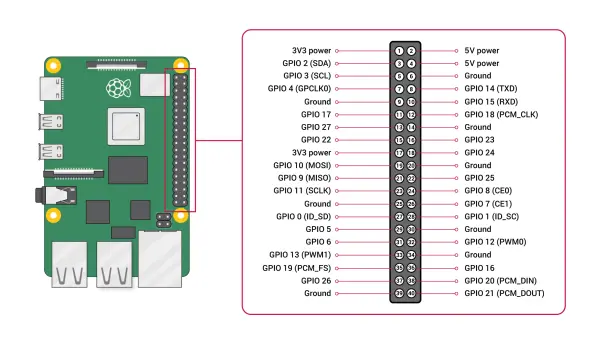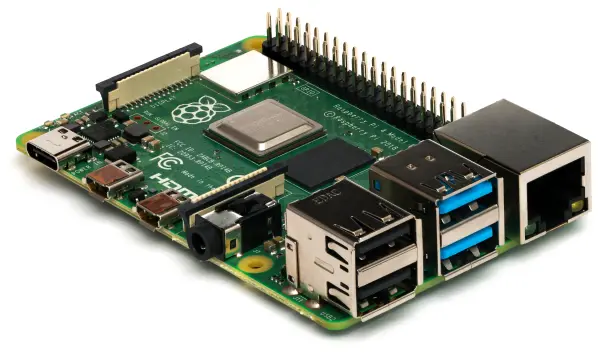What is a Raspberry Pi?
The Raspberry Pi is an affordable computer, about the size of a credit card, which can be connected to a computer monitor or TV. It can be operated using a standard keyboard and mouse. Each Raspberry Pi comes pre-installed with Raspbian, a flexible operating system based on Linux. This operating system provides the option to start either through a graphical desktop interface or through advanced kernel commands. It offers users the opportunity to explore various aspects of computing, programming, and maker projects. Despite its small size, the Raspberry Pi is capable of performing all the typical tasks of a desktop computer, including internet browsing, video playback, word processing, spreadsheet management, gaming, and more. Moreover, due to its low cost and lightweight design, the Raspberry Pi enables users to engage in diverse maker projects such as creating weather stations, digital cameras, robots, smart homes, music machines, and many other possibilities.
The Reimagine Space at GCC Library provides access to ten Raspberry Pi units for use within the space. Moreover, five of these units can be borrowed and taken home by students to work on their projects. Additionally, the GCC Libraries offer assistance to students who are interested in purchasing kits for their Raspberry Pi projects. Detailed information can be found on the Raspberry Pi projects page. To learn more about getting started, please visit the provided website or refer to the instructional videos below.
Getting Started with Raspberry Pi Videos
What is Raspbian?
Raspbian serves as the operating system for Raspberry Pi devices and is derived from the Debian branch of Linux. When we mention the operating system, we're referring to the software that operates your computer, similar to how Windows functions on Microsoft computers or macOS on Apple computers. Like any operating system, Raspbian consists of two main components: the Graphical User Interface (GUI) and the command line (often referred to as the shell in Linux).
GUI
The Graphical User Interface (GUI) is essentially the visual interface of your computer, presenting icons and folders that can be navigated by clicking to access various content.
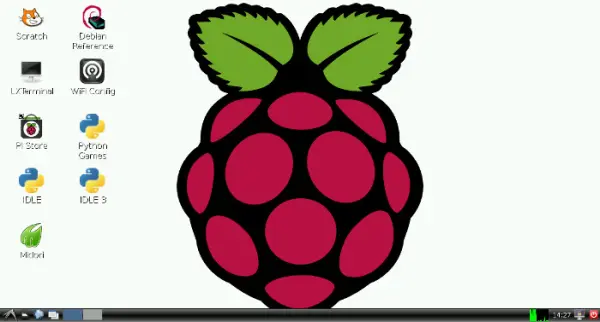
The Command Shell
The command shell serves as the backend interface of Raspbian, allowing you to input commands directly for tasks such as program installations and more. Here are a few fundamental commands, along with a video demonstration to provide you with an introduction to working with this command interface.
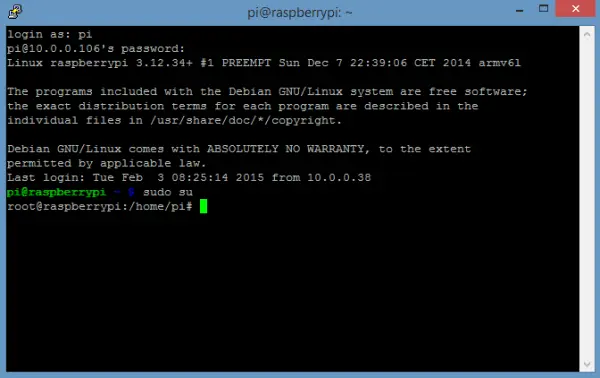
Do I need both?
To fully utilize the capabilities of Raspberry Pi, it is beneficial to have some familiarity with both interfaces. The GUI interface is similar to a typical Windows computer, so most people can easily navigate it. On the other hand, learning the Command Shell may require some time, but this interface proves particularly useful when installing programs and components that are essential for projects and applications.
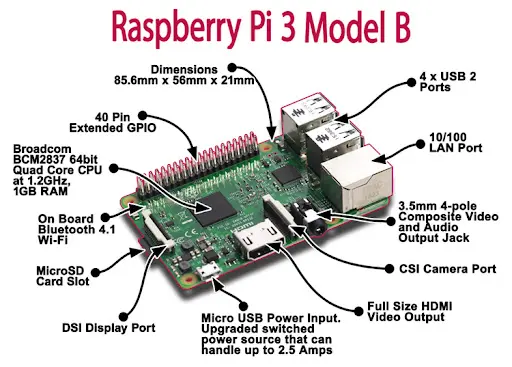
Raspberry Pi Physical Components
It is advisable to become acquainted with the various physical components of Raspberry Pi to comprehend their roles in projects and applications. The diagram above illustrates some of the primary components, although there might be slight variations depending on the specific version of Raspberry Pi being used.
The Basics
Wifi Installed
Every Raspberry Pi available in the library is equipped with built-in Wi-Fi capabilities, eliminating the need for you to worry about acquiring Wi-Fi connectivity separately.
Micro USB Power Input
This component functions as the power plug, which is essential for connecting your Raspberry Pi to a power source.
HDMI Video Output
Each of our Raspberry Pi units comes with an HDMI cable, which can be inserted into the HDMI port of your preferred monitor, screen, or television. In case you don't have a monitor available, we also provide mini screens that you can use as an alternative. However, it's worth noting that the majority of modern monitors and televisions are equipped with HDMI ports, making them suitable for use as monitors with Raspberry Pi.
MicroSD Card Slot
The MicroSD Card slot is an essential component as it serves as the storage location for your operating system and the files you save directly onto your Raspberry Pi. It functions similarly to the file storage space on a computer, rather than just being removable storage.
USB Ports
The USB ports available on Raspberry Pi can serve multiple purposes, such as connecting removable storage devices, USB keyboards, USB mice, and more. These ports offer versatility in terms of their functionality.
GPIOs
GPIO, which stands for General-Purpose Input/Output, is a feature that enables the Raspberry Pi to interact with the external world. It allows for both the reception of information from the outside world and the transmission of information and commands to external devices. For instance, GPIO pins can be connected to sensors that provide the Raspberry Pi with environmental data, or they can be connected to devices like motors or lights that can be controlled through commands from the Pi. GPIO provides a versatile means of integrating the Raspberry Pi with its surroundings.
Below is a depiction of the GPIO pin layout on the Raspberry Pi for your reference.
